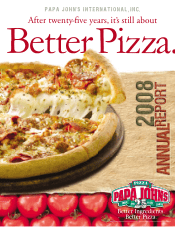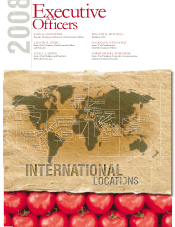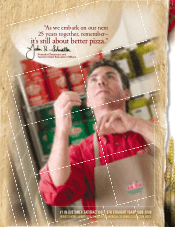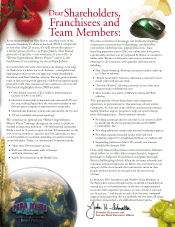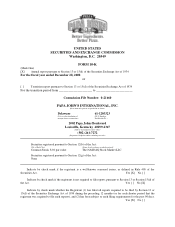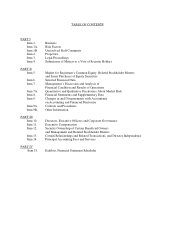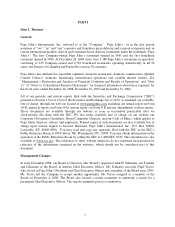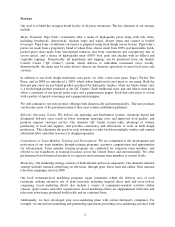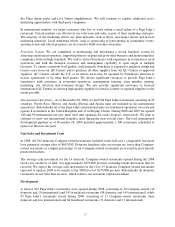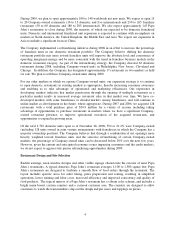Papa Johns 2008 Annual Report Download - page 11
Download and view the complete annual report
Please find page 11 of the 2008 Papa Johns annual report below. You can navigate through the pages in the report by either clicking on the pages listed below, or by using the keyword search tool below to find specific information within the annual report.4
During 2009, we plan to open approximately 100 to 140 worldwide net new units. We expect to open 15
to 20 Company-owned restaurants (10 to 15 domestic and five international) and 230 to 265 franchise
restaurants (50 to 60 domestic and 180 to 205 international). We also expect approximately 145 Papa
John’s restaurants to close during 2009, the majority of which are expected to be domestic franchised
units. Domestic and international franchised unit expansion is expected to continue with an emphasis on
markets in North America, the United Kingdom, the Middle East and Asia. We expect our expansion in
Asia to include a significant focus in China.
The Company implemented a refranchising initiative during 2008 in an effort to increase the percentage
of franchise units in our domestic restaurant portfolio. The Company believes shifting the domestic
restaurant portfolio mix more toward franchise units will improve the absolute level and consistency of
operating margin percentage and be more consistent with the trend in franchise business models in the
domestic restaurant category. As part of the refranchising strategy, the Company divested 62 domestic
restaurants during 2008, including Company-owned units in Philadelphia, New Jersey, Cleveland and
Chicago. In addition, the Company has designated approximately 17 restaurants in two markets as held
for sale. We plan to sell these Company-owned units during 2009.
For our other markets in which we operate Company-owned units, our expansion strategy is to continue
to open domestic restaurants in existing markets as appropriate, thereby increasing consumer awareness
and enabling us to take advantage of operational and marketing efficiencies. Our experience in
developing markets indicates that market penetration through the opening of multiple restaurants in a
particular market results in increased average restaurant sales in that market over time. We have co-
developed markets with some franchisees or divided markets among franchisees, and will continue to
utilize market co-development in the future, where appropriate. During 2007 and 2006, we acquired 128
restaurants with a total purchase price of $56.9 million for a variety of reasons including taking
advantage of opportunities to purchase restaurants in markets where we have a significant Company-
owned restaurant presence, to improve operational execution of the acquired restaurants, and
opportunities to expand in growing areas.
Of the total 2,792 domestic units open as of December 28, 2008, 592 or 21.2% were Company-owned
(including 128 units owned in joint venture arrangements with franchisees in which the Company has a
majority ownership position). The Company believes that through a combination of net openings more
heavily weighted toward franchise units and the selective refranchising of certain Company-owned
markets, the percentage of Company-owned units can be decreased below 20% over the next few years.
However, given the current and anticipated economic issues impacting consumers and the credit markets,
we do not expect to aggressively pursue refranchising opportunities during 2009.
Restaurant Design and Site Selection
Backlit awnings, neon window designs and other visible signage characterize the exterior of most Papa
John’s restaurants. A typical domestic Papa John’s restaurant averages 1,100 to 1,500 square feet. Papa
John’s restaurants are designed to facilitate a smooth flow of food orders through the restaurant. The
layout includes specific areas for order taking, pizza preparation and routing, resulting in simplified
operations, lower training and labor costs, increased efficiency and improved consistency and quality of
food products. The typical interior of a Papa John’s restaurant has a vibrant color scheme, and includes a
bright menu board, custom counters and a carryout customer area. The counters are designed to allow
customers to watch the team members slap out the dough and put sauce and toppings on pizzas.

